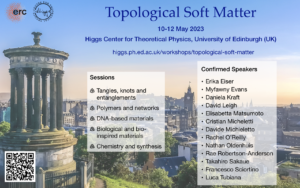Producing the Ultimate High Energy Density Material
Nitrogen is a truly unique element. As a diatomic molecule, N2, is extremely stable and features the strongest homoatomic bond. However, under the application of extreme pressures and temperatures, the N2 molecule breaks apart and nitrogen transforms into a 3D polymeric solid called cubic gauche polymeric nitrogen (cg-N). This solid, comprised solely of single-bonded nitrogen atoms, is the ultimate high energy density material. It can store and release about 10x more energy than the best compounds and is 100% environmentally friendly. A small problem remains: cg-N cannot be recovered to ambient conditions.
In this talk, we will explore a variety of experimental high-pressure high-temperature paths to produce alternatives to cg-N. An unexpectedly large zoology of nitrogen species is discovered, with many exotic and exciting properties, including materials highly energetic and fully recoverable to ambient conditions.
Room 2511 JCMB
Leave a Comment

